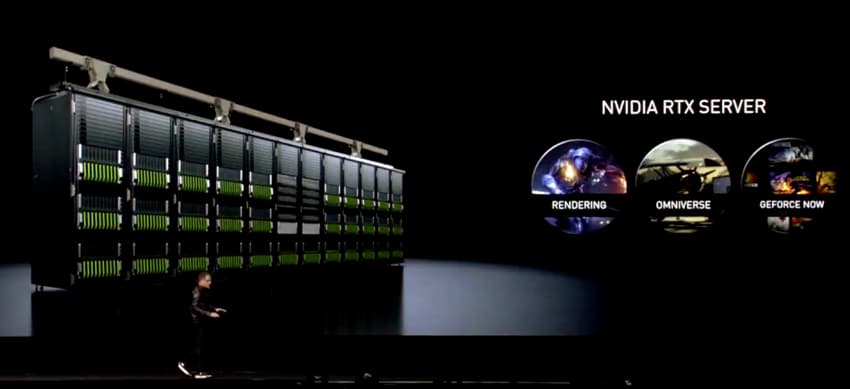
Today at the GPU Technology Conference, NVIDIA announced that it is expanding its RTX server lineup to meet the demand for data center and cloud graphic applications. Some of the world’s largest system makers are rolling out new RTX servers including Dell, HPE, Lenovo, ASUS and Supermicro. These new servers will be able to deliver visually rich content in real-time without the previous costs involved.

Content is being creating and consumed faster than ever. And new technologies like 5G-enabled cloud gaming and VR streaming are going to drive the demand for high computational power even higher. NVIDIA is meeting these needs with their RTX servers. Not only do they state the server can eaisly provide rendering, gaming, VR and AR, and professional visualization applications, they state that now the severs can deliver cinematic-quality graphics enhanced by ray tracing for far less than just the cost of electricity for a CPU-based rendering cluster with the same performance.
A new step in the technology announced today was the new RTX Blade Server. It has 1,280 Turing GPUs on 32 RTX blade servers (each RTX blade server packs 40 GPUs into an 8U). This is a level of computational power, cloud-rendered density, efficiency, and scalability not seen before. Mellanox (recently acquired by NVIDIA) is the backbone storage and networking interconnect that delivers the apps and updates to the users connected with NVIDIA GRID vGaming or container software. The servers are said to render and stream games at the performance levels of GeForce RTX 2080 GPUs to any client device. The RTX Servers are also making cloud-rendered AR and VR applications a reality through their low-latency mobile edge computing.
With the embrace of 5G, streaming more complex applications through the cloud is becoming more viable. Combining RTX Servers on 5G edge networks will give users access to cloud gaming services like GeForce NOW and AR and VR applications on just about any device.
The NVIDIA RTX servers allow for virtualized production, rendering, and collaboration at high performance at a much lower cost that using a CPU rendering farm. This allows from higher quality effects, faster. Leverage Omniverse on RTX servers allows for faster collaboration on projects. And the support for Quadro vDWS allows for artists and designers to run their creation applications in a more mobile and collaborative manner without giving up performance.
Availability
2U and 4U RTX servers are available from NVIDIA’s OEM partners today. The new 8U RTX blade server will initially be available from NVIDIA in the third quarter of this year.
Sign up for the StorageReview newsletter
